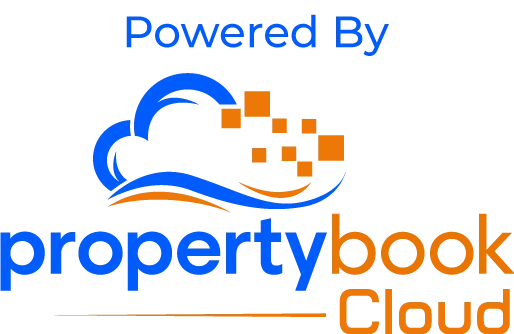Are you struggling to keep track of your furnished rental properties? Perhaps you're considering venturing into the lucrative world of fully furnished rentals but aren't sure where to start? Whether you own a single furnished apartment or manage multiple equipped properties across Zimbabwe, this guide is your roadmap to success.
In today's fast-paced rental market, furnished properties offer a golden opportunity for landlords and property managers. With the right approach, these ready-to-move-in spaces can command higher rents, attract quality tenants, and simplify the rental process. But they also come with unique challenges that require special attention.
As Zimbabwe's leading property marketplace, Propertybook has seen firsthand how well-managed furnished properties outperform their unfurnished counterparts.
Let's unpack everything you need to know about managing furnished properties in Zimbabwe's unique rental landscape.
What Makes Furnished Property Management Different?
Managing a furnished property isn't simply about adding furniture to your rental unit. It requires a different mindset and approach compared to traditional property management.
When you provide a fully furnished property, you're offering tenants a complete living solution, not just a space. This means more initial investment, greater ongoing responsibility, and potentially higher returns. The furniture and equipment you provide becomes a major selling point—and a major responsibility.
In Zimbabwe's rental market, where quality furnished properties are in high demand but relatively short supply, standing out means focusing on:
- Quality and durability of furnishings
- Thoughtful, functional design
- Regular maintenance and quick replacements
- Clear documentation of all provided items
- Setting appropriate rental rates that reflect your investment
Now, let's dive into the core aspects of successful furnished property management.
Tenant Screening: Finding the Right Match
When it comes to furnished properties, tenant screening takes on even greater importance. Your potential tenants will be living with and using your furniture, appliances, and other valuable items daily.
Creating a Rigorous Screening Process
Start by developing a comprehensive application form that covers:
- Employment verification with current income details
- Previous rental history and references from past landlords
- Credit checks (where possible in the Zimbabwean context)
- Personal references who can vouch for their reliability
- Specific questions about their lifestyle and living habits
Remember, a tenant who looks perfect on paper might not be the best fit for your furnished property. Someone with excellent income but a history of frequent parties might put your furniture at risk.
Red Flags to Watch For
Pay special attention to:
- Gaps in rental history or frequent moves
- Reluctance to provide references
- Inability to pay the security deposit upfront
- Requests for exceptions to your clearly stated policies
- Negative references from previous landlords regarding property care
Setting Clear Expectations
Before signing any agreement, have a frank conversation about:
- Your expectations regarding furniture care
- Cleaning requirements for appliances and furnishings
- Policy on alterations (hanging pictures, moving furniture, etc.)
- Process for reporting damages or maintenance issues
The question to ask yourself is whether rather have my furnished apartment vacant for an extra month than rush to place a tenant who doesn't respect the additional investment I've made in furnishing the property."
Crafting Airtight Rental Agreements
Standard rental agreements won't suffice for furnished properties. You need specialized clauses that protect your additional investments.
Essential Components for Furnished Property Agreements
Beyond standard lease terms, include:
- A detailed inventory list of all furniture, appliances, and equipment
- The condition of each item at move-in (supported by photos)
- Responsibilities for maintenance and cleaning of furnished items
- Specific terms for security deposit deductions related to furniture damage
- Policies regarding replacement of damaged items
- Clear guidelines about what tenants can and cannot modify
The Inventory Checklist: Your Best Protection
Create a comprehensive inventory that:
- Lists every item provided, from major furniture to smaller items like kitchen utensils
- Notes the brand, model, and approximate value of more expensive items
- Documents the condition with descriptive terms (excellent, good, fair)
- Includes dated photographs of each room and close-ups of valuable items
- Is signed by both you and the tenant at move-in and move-out
Imagine you have a tenant claim a coffee table was already scratched when they moved in. If you don't have photos of that specific item, you cannot prove otherwise. That's why it's important to photograph everything, perhaps even down to the cutlery.
Maintenance: Keeping Everything in Working Order
Maintenance for furnished properties goes beyond the structure itself—it extends to everything inside.
Preventative Maintenance Schedule
Develop a calendar for:
- Quarterly inspection of major furniture pieces
- Semi-annual deep cleaning of upholstery and carpets
- Annual servicing of all provided appliances
- Regular pest control treatments
- Checking and replacing smaller items as needed
Quick Response Systems
Establish processes for:
- 24-hour response to maintenance requests related to essential appliances
- 48-72 hour response to furniture repair needs
- Clear communication channels for tenants to report issues
- Trusted service providers who can repair or replace furnished items quickly
- Documentation of all maintenance activities
Replacement vs. Repair Decisions
Create guidelines to help you decide when to:
- Repair a damaged item
- Replace it with a similar model
- Upgrade to a newer version
- Remove it from the property altogether
In Zimbabwe's current economic climate, where importing quality furniture can be costly and time-consuming, having these decisions mapped out in advance can save you significant stress and expense.
Financial Management: Maximizing Returns
Managing the finances of furnished properties requires careful calculation and planning.
Setting the Right Rental Price
When determining rent for your furnished property:
- Research comparable furnished rentals in your area (PropertyBook's listings can help with this)
- Calculate the additional value your furnishings provide
- Consider the depreciation of furniture and appliances
- Factor in higher maintenance and replacement costs
- Adjust for seasonal demand fluctuations
- Set a premium that reflects the convenience you're offering
In Zimbabwe's major cities, furnished properties typically command a 20-30% premium over unfurnished ones. However, this varies significantly by location and target market.
Security Deposit Considerations
For furnished properties:
- Charge a higher security deposit to cover potential furniture damage
- Clearly outline what portion relates to the property itself versus the furnishings
- Document how depreciation will be calculated for older items
- Create a fair assessment process for normal wear and tear versus damage
Tax Implications and Benefits
Consult with a tax professional about:
- Depreciation benefits for furniture and appliances
- Deductions for replacement and repair costs
- Record-keeping requirements for furnished rental expenses
- How to properly categorize furnished rental income
A property owner in Mutare noted, "I was able to offset much of my initial furnishing costs through proper tax planning. It's worth getting professional advice specific to furnished rentals."
Problem Resolution: Handling Disputes
Even with careful planning, issues will arise. Having clear procedures helps minimize conflicts.
Common Furnished Property Disputes
Be prepared to address:
- Disagreements about the condition of furniture at move-out
- Claims about pre-existing damage
- Disputes over security deposit deductions
- Complaints about furniture quality or comfort
- Requests to remove or replace certain items
Mediation Strategies
Develop approaches for:
- Listening to tenant concerns without immediate judgment
- Using your detailed inventory and photos to establish facts
- Offering compromise solutions when appropriate
- Bringing in neutral third parties when necessary
- Knowing when to stand firm on your policies
Documentation Is Your Best Defense
Throughout the tenancy, maintain:
- Records of all communications regarding furnished items
- Notes from property inspections
- Receipts for all replacements or repairs
- Photos taken during maintenance visits
- Signed acknowledgments of any changes to the inventory
Legal Compliance: Staying on the Right Side of the Law
Understanding the legal aspects of furnished property rentals is essential for protecting your investment.
Safety Standards
Ensure all furnished items meet basic safety requirements:
- Electrical appliances should be tested and certified safe
- Upholstered furniture should meet fire safety standards
- No obvious hazards should be present in any provided items
- All equipment should be in good working order
Insurance Considerations
Review your insurance policies to confirm:
- Coverage extends to the contents you're providing
- Liability protection in case a tenant is injured by provided furniture
- Replacement cost coverage for damaged items
- Any specific requirements for landlords of furnished properties
Compliance with Local Regulations
Research Zimbabwe-specific requirements regarding:
- Any licensing needed for furnished rentals
- Health and safety standards that apply to furnished properties
- Any special tax considerations for furnished rental income
- Local council regulations that might affect your operations
Technology Tools for Furnished Property Management
Leveraging technology can significantly simplify the management of furnished properties.
Property Management Software
Look for systems that allow you to:
- Track inventory with photos and condition reports
- Manage maintenance schedules for furniture and appliances
- Communicate efficiently with tenants about furnished items
- Document the entire life cycle of each furnished component
- Generate reports on the performance of your furnished rentals
Digital Documentation
Utilize technology for:
- Creating and storing inventory lists with cloud backups
- Taking and organizing dated photos of all furnished items
- Generating condition reports that can be signed electronically
- Tracking the age and warranty information of appliances
- Maintaining repair histories for furnished components
Marketing Your Furnished Property Effectively
A well-marketed furnished property will attract better tenants and potentially command higher rents.
Highlighting the Right Features
Focus your marketing on:
- The quality and style of your furnishings
- The convenience of a move-in ready home
- Any premium or unique pieces that set your property apart
- The functionality and thoughtfulness of your furnished setup
- Time and money saved on moving and buying furniture
Professional Photography
Invest in:
- High-quality photos that showcase furnished rooms
- Virtual tours that allow prospective tenants to "walk through" the space
- Detailed images of special features or high-end furnishings
- Before-and-after shots if you've recently upgraded the furnishings
- Photos taken with proper lighting to show true colors and textures
Use Propertybook's photographers and videographers to help bring your listing to life.
Targeting the Right Tenant Demographic
Different furnished properties appeal to different markets:
- Corporate rentals for business professionals
- Short-term accommodations for travelers or temporary workers
- Student housing near educational institutions
- Luxury furnished units for high-income professionals
- Family-friendly setups for relocating families
Understanding your target market will help you furnish and market your property appropriately.
Final Thoughts: Is Furnished Property Management Right for You?
Managing furnished properties can be rewarding but comes with additional responsibilities. Before diving in, ask yourself:
- Do you have the capital to invest in quality furnishings?
- Are you prepared for more hands-on management and maintenance?
- Do you understand the target market for furnished rentals in your area?
- Can you handle the additional administrative work of inventory management?
- Are you willing to learn the specialized aspects of furnished property management?
If you answered yes to these questions, furnished property management could be a profitable addition to your property portfolio.
Remember, in Zimbabwe's competitive rental market, the difference between a profitable furnished property and a problematic one often comes down to management quality. With careful planning, clear policies, and consistent execution, you can create a furnished rental business that stands out from the crowd.
For more information on property management or to explore Zimbabwe's largest selection of properties, visit www.propertybook.co.zw. Our team is ready to help you succeed in every aspect of property investment and management.
This article was last updated on April 16, 2025, to reflect current market conditions and best practices in Zimbabwe's furnished rental market.





